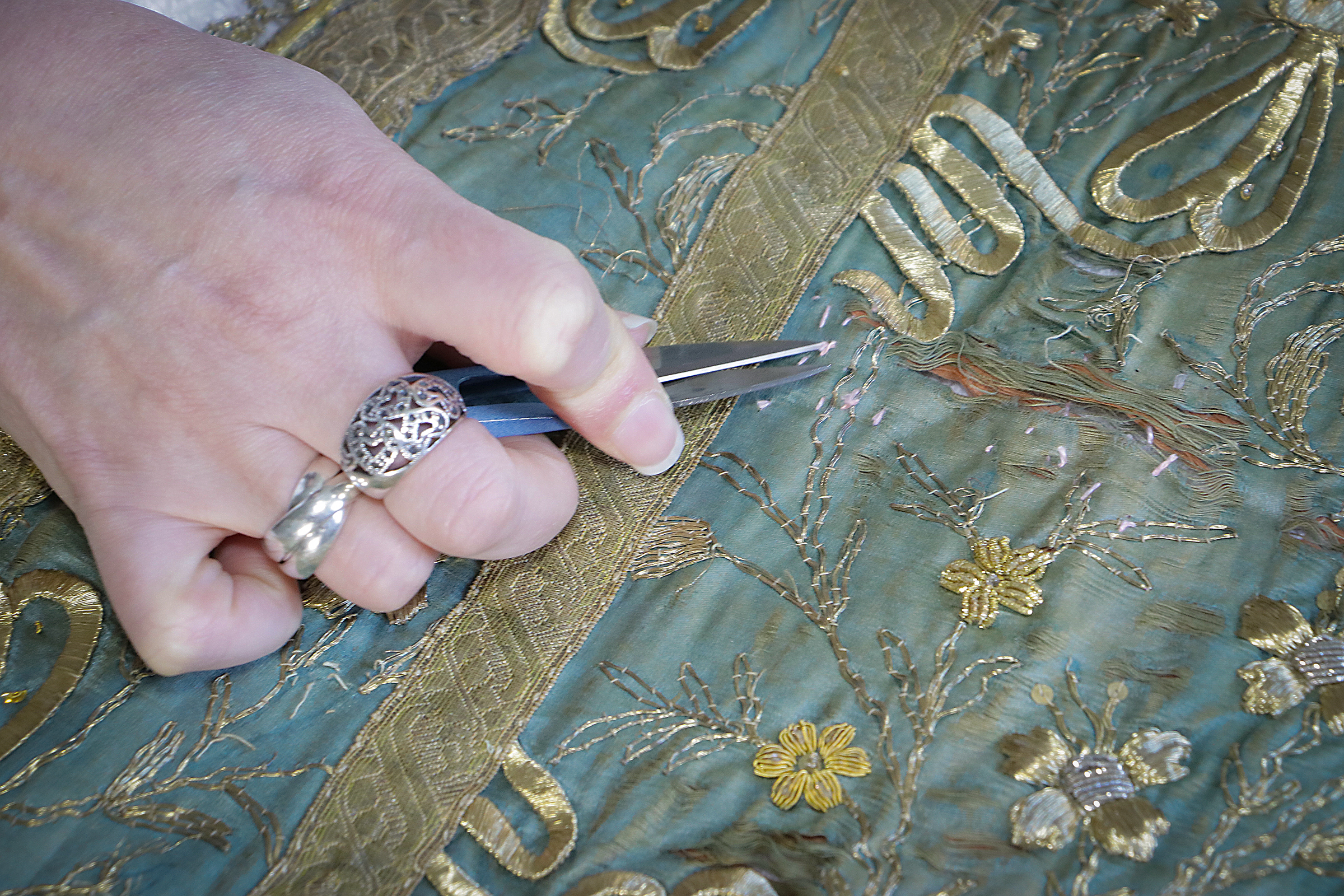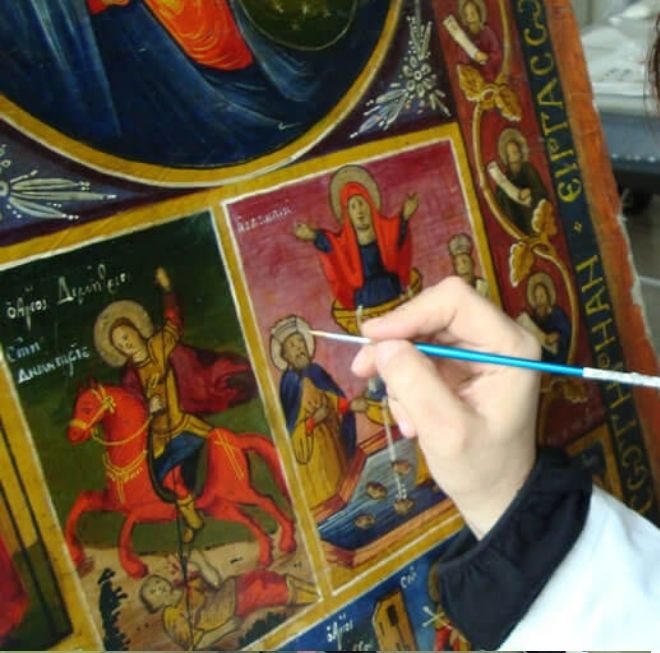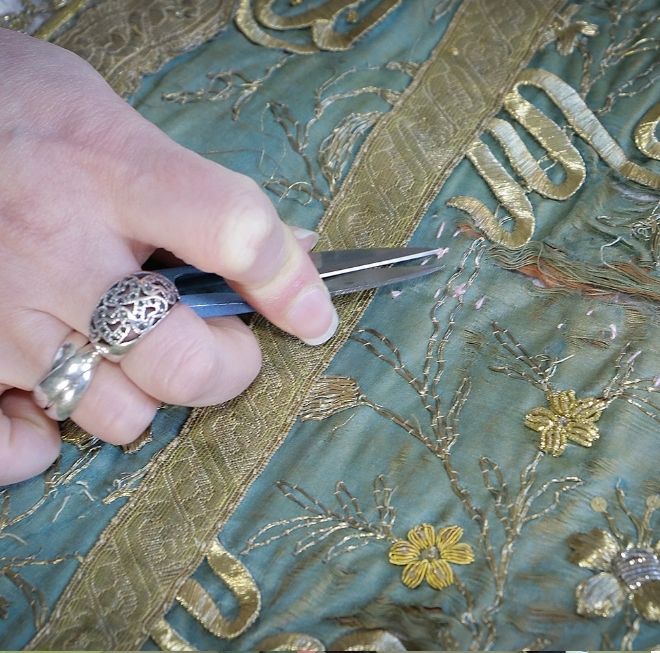
Textile Conservation
Conservation and Restoration Department
The Conservation and Restoration Department is responsible for the preservation and restoration of movable cultural heritage and museum collections made of various materials, including metal, ceramics, stone, bone, textiles, wood, and others. The department conducts examinations of cultural property and museum objects, assessing their composition, manufacturing techniques, condition, and causes of deterioration. In addition, it keeps up with modern examination methods and develops procedures for the protection, conservation, and restoration of movable cultural heritage.
Special attention is give to creating adequate conditions for exhibiting, storing, and transporting museum collections, as well as maintaining records on the objects, including their number, condition, and movement. Moreover, the department keeps documentation of completed works and strives to provide modern technical equipment and professional literature necessary for its activities.
Activities of the Conservation and Restoration Department
The Department organizes and implements programs for the education and professional development of specialists, as well as publishes the results of its work. Its activities also include providing professional assistance in the care and maintenance of movable cultural property, monitoring the implementation of protection measures, and proposing new measures for the protection of movable cultural property and museum collections.
The Conservation and Restoration Department consists of the following workshops:
- Workshop for the Conservation and Restoration of Paintings
- Textile and Leather Conservation and Restoration Workshop
- Metal Conservation and Restoration Specialist
- Wood Conservation and Restoration Specialist

Restauracija
Painting Conservation and Restoration Workshop
This workshop specializes in the conservation and restoration of paintings on canvas and wood panels. It is equipped with modern conservation and restoration equipment that enable comprehensive treatment. The work is carried out by three conservators: Senior Conservator Dijana Pešikan Egić, Painter-Conservator Đurđica Bjelošević, and Painter-Conservator Branko Jungić.
Numerous paintings that have been designated cultural property of Bosnia and Herzegovina, as well as paintings from the Museum's Department of Art History were conserved and restored in this workshop.

Рестаурација
Textile and Leather Conservation and Restoration Workshop
The workshop was established in 2002, initiating a process of staff development, technical upgrades, and professional training. With the acquisition of a conservation bath and specialized tools, as well as ongoing improvements, the workshop was equipped to carry out the most complex conservation procedures on textiles and leather. The aim of its conservation work is to preserve the existing form and integrity of the material. The Textile and Leather Conservation and Restoration Workshop serves all departments that hold textiles and leather in their collections and is responsible for protecting several thousand objects. Conservation and restoration work is carried out by Dragana Radoja, a conservator with a degree in textile and clothing design and engineering.

Рестаурација
Metal Conservation and Restoration Specialist
When the Museum of the Vrbas Banovina was founded in 1930 in Banja Luka, a Conservation and Preparation Department was also established. At that time, conservation and restoration work was performed by the Museum’s director, Špiro Bocarić, as no other staff were available. Only after the Second World War did significant advances in technology and resources make possible a more systematic approach to the preservation of museum objects. The Conservation and Restoration Workshop was completed in 2000, equipped with professional staff, as well as tools and materials for the treatment of stone, wood and metal.

Рестаурација
Wood Conservation and Restoration Specialist
This position was established in 1985, when Mileva Crnobrnja was hired. In 1986 she was sent for training at the Croatian Conservation Institute, where she gained expertise in new wood conservation technologies and working methods. The need for the treatment and protection of wooden exhibits was considerable, as many were in poor condition. Conservation work included the protection of the Melanesian Collection, the Arab Room, musical instruments, historic weapons and other collections of the Museum of the Republic of Srpska.
